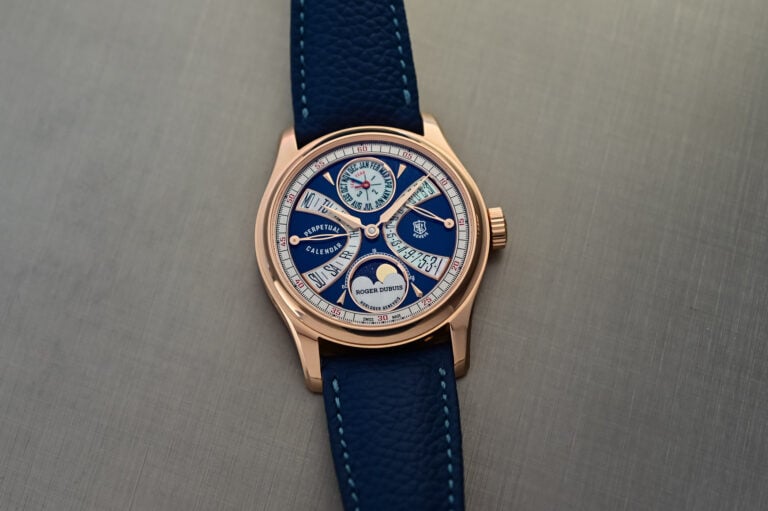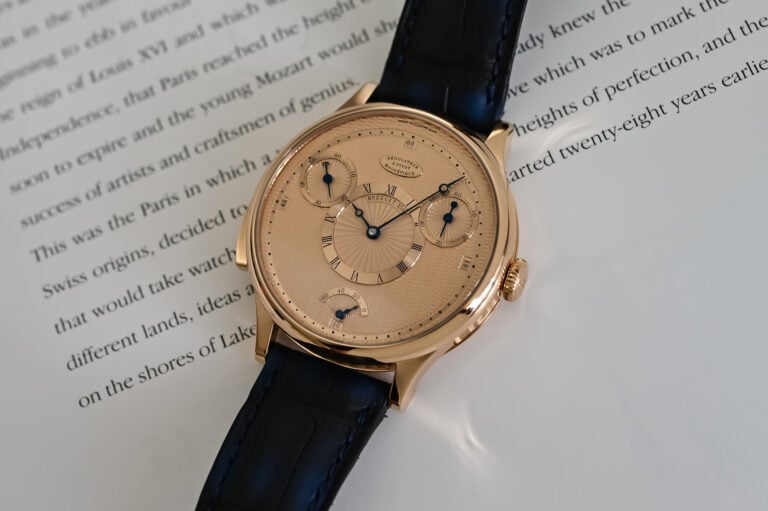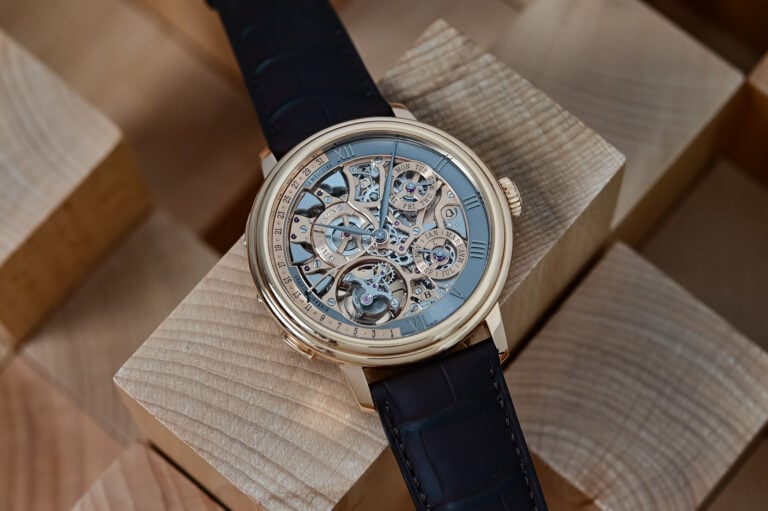A watch with tool-like properties in a relative simple, military style with a focus on robustness and legibility. The style originates from trench watches used by soldiers in World War 1. Most field watches use a dark dial with bright (mostly white) markings and hands.
The decoration of a watch movement, including Côtes de Genève, perlage, engraving and more.
A piece under the crystal that raises it above the dial and hands, also known as the rehaut (French).
A chronograph that can be reset and restarted with one click, without needing to first stop, then reset and start again like a standard chronograph. Also known as Retour en Vol (French).
The same as a deployment buckle, which folds in on itself and snaps closed. It’s a more sophisticated option to the pin buckle and allows a wearer to simply slide it off their wrist when open.
Also known as a flying seconds hand, it’s a sub-dial that indicates fractions of a second.
The measure of how fast a watch movement beats. It’s measured in two ways – Hertz (Hz) is the number of oscillations of the balance wheel in one second, while vibrations per hour (vph) measures each half oscillation of the balance wheel (one vibration) and totals it for one hour.
A decorative finishing technique used on various components, from dials to movement parts. It can be achieved by blasting an abrasive substance onto the surface of a part, resulting in a very fine grained effect.
An old solution used to fix the uneven power delivery issue from the mainspring as it went from fully wound to an unwound state. The fusée is shaped like a cone and connects to the mainspring’s barrel by a chain, and maintains consistent tension as the mainspring unwinds due to its shape. Modern mainspring alloys and other solutions have largely replaced this.



